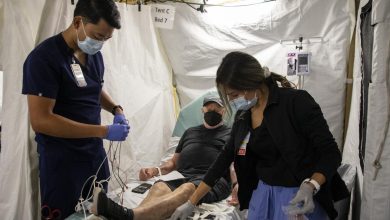40% of cancers found to be preventable with these lifestyle changes

Avoiding smoking, binge drinking, and being dangerously overweight has been linked to a lower risk of cancer in adults. According to a recent study, these behaviors are the main preventable causes of cancer in adults.
According to a research released this week by the American Cancer Society, those who give up high-risk habits like drinking and smoking could prevent 40% of new cancer diagnoses and 44% of cancer deaths among adults 30 and older. According to experts, the study offers new proof that public health officials should urge individuals to maintain healthy lives in order to lower their risk of cancer as well as strong evidence that people should take preventative measures.
The American Cancer Society study looked at cancer cases and deaths that may have been avoided by vaccinations against hepatitis B and HPV, which lower the risk of infections that cause cancer, or by dietary and behavioral modifications.
Alcohol consumption, secondhand smoke exposure, smoking, and being overweight are among the behaviors that can increase one’s risk of developing cancer. The risk of developing cancer is also increased by eating diets deficient in fruits, vegetables, dietary fiber, or calcium, as well as by consuming excessive amounts of red or processed meat. The study also mentioned the risk of cancer associated with diseases including Epstein-Barr virus, HIV, human papillomavirus, hepatitis B, and Kaposi sarcoma herpes virus.
It’s crucial to urge public health organizations and policymakers to support policies that promote healthy habits, according to experts who weren’t engaged in the population-level study.
Ernest Hawk, vice president of the University of Texas MD Anderson Cancer Center and head of cancer prevention and population sciences, called the findings “a big opportunity for our country – really every country – to reduce cancer incidence and mortality by being more proactive in prioritizing prevention at a personal level and at a societal level.”
According to Hawk, the goal of a study such as this is to inform and educate people rather than to stigmatize those who smoke, drink, or partake in other high-risk behaviors.
“It’s hard to change one’s lifestyle immediately or consistently over time,” Hawk stated. “Helping them toward helpful behaviors and helpful policies that can assist them in making that choice easier” is the stated objective.
40% of the approximately 1.8 million cancer cases in individuals 30 years of age and older in 2019 were predicted by the study to be related to “potentially modifiable risk factors.” Non-melanoma skin cancers were not included in the examination of 30 forms of cancer.
The causes of cancer the study said were preventable broke down like this:
- Cigarette smoking was the top risk factor, accounting for 19.3% of cases.
- Excess body weight was a risk factor in 7.6% of cases.
- Alcohol consumption was linked to 5.4% of cases.
- Ultraviolet radiation caused 4.6% of cases.
Researchers found that the most occurrences of lung cancer were associated with avoidable risk factors. Men had 104,410 avoidable lung cancer cases, while women had 97,250 cases. Skin melanoma (50,570 instances) and colon cancer (44,310 cases) were the second most prevalent avoidable cancers.
The study’s lead author, Farad Islami, is the senior scientific director of cancer disparity research at the American Cancer Society. “Despite considerable declines in smoking prevalence during the past few decades, the number of lung cancer deaths attributable to cigarette smoking in the United States is alarming,” Islami said.
According to Islami, the study demonstrates the necessity of tobacco control laws that motivate individuals to give up smoking in every state. He also mentioned the significance of lung cancer early detection.
Officials from the American Cancer Society also emphasized the significance of hepatitis B and human papillomavirus, or HPV, vaccinations. Liver cancer is caused by hepatitis B, and HPV can cause a variety of malignancies, such as cancers of the mouth, throat, and anal regions as well as cervical, anal, and genital cancers.
The American Cancer Society predicted earlier this year that there will be more than 2 million new cases of cancer in the United States for the first time. Nonetheless, the study found that during the previous three decades, fatality rates had decreased due to decreased smoking rates, faster detection, and better therapies.




